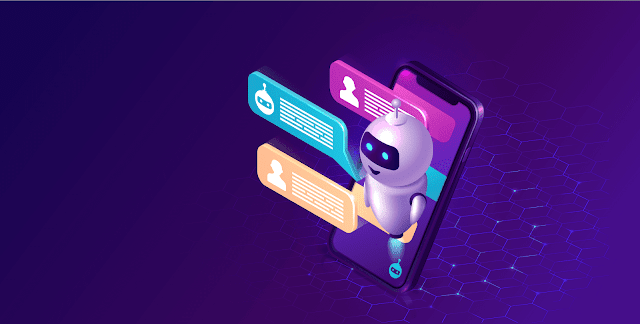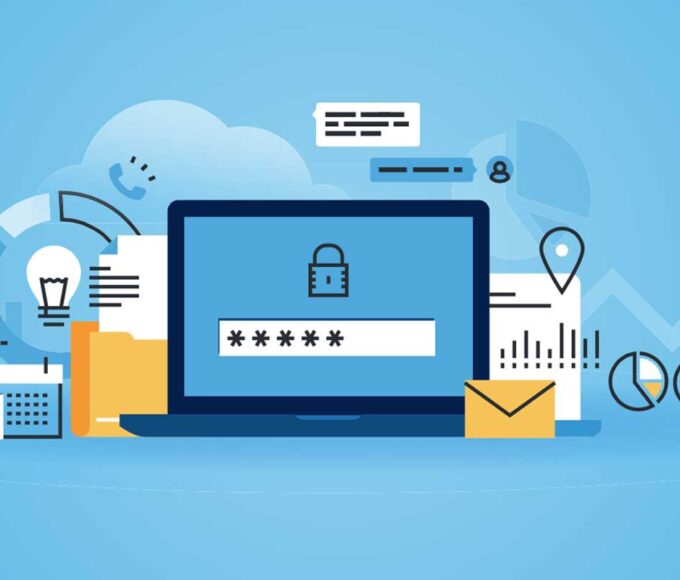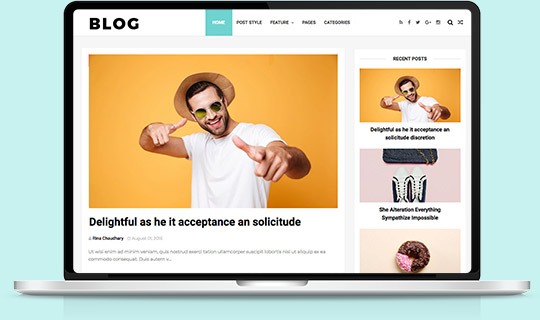 |
| How to Make a Chatbot? |
I know what you’re thinking. It’s 2019, who the hell writes about chatbots? Aren’t they dead? Yes and no. I mean, this image in our head of chatbots as the next big thing is dead for good. We no longer believe that they will replace apps and some jobs.
(toc)
I mean, if Facebook can’t even make them work, what are we, mere mortals, hoping to achieve… So yes, the hype, the image, the mythology are dead.
What is not dead, however, are the bots themselves.
![]()
Companies can still benefit from using bots, and many do. However, the approach is different: bots are not replacing anything or anyone, they are complementing them. In this article, we’ll show you how to make a chat bot, offer tutorials on how to build a bot and give tips on creating effective chat bots in your environment.
How To Make a Chatbot Without Programming
If you want to make a chatbot, there are two main ways: you either use a bot-building platform that usually simplifies the whole process or you program the bot yourself. Let’s talk about platforms first.
Flowxo
Link: https://flowxo.com/product/flow-for-chat/
Flowxo is a chat-building platform that allows you to create bots without coding experience. Upon creating your first bot, a simple tutorial explains how the platform works. Basically, you develop your chatbot as a series of flows and triggers that specify how the bot responds to users messaging it. The most basic trigger is a new message:
![]()
In the above example, when a new message is received the bot will reply with either “Hello”, “Hi,” or “Hiya”. You can specify triggers for certain phrases and, consequently, specify a bot’s actions for those triggers. The bot can reply with either a message, a question, a card or some custom integration, e.g. linking to a Google Sheets document. And that’s basically how most chatbots are programmed, in a nutshell.
Flowxo supports multiple platforms: Facebook, Slack, Telegram. So you can create one bot flow and then export it to as many platforms as you need. What’s cool about Flow Xo is that it supports 100+ integrations with popular services like Linkedin, Buffer, and Intercom, to name a few.
Plus, you can unite bots from multiple platforms and, for example, broadcast to all of your users on Telegram and Facebook at once.
Mobile Monkey Chatbot
Link: https://mobilemonkey.com/
Previously known as ChattyPeople before the acquisition, Mobile Monkey Chatbot is a platform for creating chat bots exclusively for Facebook. It has a dashboard with relatively simple UI where you can create menus, triggers and have access to bot analytics.
![]()
Any user who interacts with this bot will appear in the ”Contacts” session of the dashboard. There you can get additional info about them, including a link to their Facebook profile. Another interesting feature is the ability to insert an HTML widget into your website (or any website you have access to, for that matter) that directly leads to a chatbot conversation. The widget will look like this:
![]()
Sceyt
Link: https://sceyt.com/
Sceyt chat API is an easy solution for creating your own chatbots, even if you’re not a coding expert. Sceyt can help you build interactive chatbots that can talk to people, engage with them, and provide a nice customer experience.
![]()
Here’s how it works: When someone sends a message, your bot can reply with a greeting like “Hello {FirstName}”, “Hello {FirstName}” or “Hello {FirstName}!” One of the best things about it is that you can write what your bot says according to certain words or phrases. It can send regular text messages, ask questions, share interactive maps, and even link to useful things like Google Sheets or things your customers are searching for.
SendPulse
Link: https://sendpulse.com/features/chatbot
A platform for all things marketing automation that combines an array of channels and tools to help marketers and small business owners create a cohesive marketing strategy. The front and center of the platform is a visual chatbot builder that allows users to create a GPT-powered chatbot for the social media platform or a messenger app of their choice.
![]()
A chatbot for Instagram, Facebook, WhatsApp, Telegram, or Viber can also be combined with other channels like SMS notifications or promotional email campaigns that are also available on the platform. What makes SendPulse stand out from the competitors is also the fact that it has an integration with Open AI and users can power their chatbots with ChatGPT.
Xenioo
Link: https://www.xenioo.com/
Xenioo is another platform that allows you to create a chatbot. What’s great about Xenioo is the intuitive process of creating a bot, a so-called behavior tree:
![]()
Every interaction leads to a certain bot behavior, and you can create complicated trees of interaction and then see everything in an intuitive, graphical representation. You’re then able to publish your bots on almost every popular platform: Facebook, WhatApp, Slack, Amazon Alexa, Google Assistant, and your own website. As many other platforms on this list, Xenioo also comes with a set of default bots that you can use as a template for your own needs:
![]() l wp-image-36911″ />
l wp-image-36911″ />
Xenioo also provides an API that you can use to call external services, although you might need to learn a bit about API keys to implement this feature. Thankfully, their blog has some tutorials on this topic.
Hubspot Chatbot Builder (previously Motion.ai)
Link: https://www.hubspot.com/products/crm/chatbot-builder
Popular in the past, the chatbot platform Motion.ai was recently acquired by Hubspot. All the intuitiveness of Motion.ai was preserved, however now it’s integrated directly into Hubspot CRM. This means, unfortunately, that you, can’t use the service outside of it.
![]()
However, if you are planning to make a chatbot an integral part of your sales strategy, that would still be a great option. Its deep integration with Hubspot marketing tools allows you to get details on leads, track sales with your bots and automate lead generation.
Chatfuel
Link: https://chatfuel.com/
Chatfuel is one of the most popular platforms for creating bots for Facebook Messenger. According to their website, 46% of Facebook bots are created using this platform.
The process of creating a chat bot is pretty straightforward:
![]()
You can set a “Default” message that will be used in an unknown scenario, a “Welcome” message to welcome new users and program buttons so that your users can choose their options.
Another powerful feature of Chatfuel is sequenced, which allow your bot to message users based on some actions they performed, e.g. signed up for your newsletter. Also, the platform has a built-in Template Marketplace where you can get bot templates from other users and, with a little tweaking, apply them to your own Facebook page.
Botsify
Link: https://botsify.com/
Botsify is a lot like Chatfuel, yet it has some advantages over it. First of all, it works not only with Facebook but also with Slack. Plus, it can be implemented on your website.
Another nice feature is recognizing the user’s input. For example, a bot can recognize numbers and perform some actions with them. That might be handy in case you want to accept orders via your bots, like “5 bananas” or something. Also, Botsify allows you to save user responses to a form – that might be handy if you’re gathering statistical data about your users and want to export their answers into a CVS form.
IMB Watson assistant
Link: https://www.ibm.com/cloud/watson-assistant/
This is perhaps one of the smartest out-of-box chatbots on this list. Though the interface may not be as intuitive as other, simpler solutions, Watson’s chatbot platform is by far the most advanced. Its core feature is Conversation Service, backed up by a neural network. In case your bot can’t interpret or process user input, it searches for answers from its knowledge base, like Wikipedia, or directs the question to a human advisor.
![]()
Watson-bot works with both Slack and Facebook. Built-in analytics will help you see where your bot struggles the most and which parts of its flow should be improved.
Gupshup
Link: https://www.gupshup.io/developer/flow-builder-bot-tool
Gupshup has a tree-bot-building workflow that proves very intuitive once you get used to it.
![]()
Even the most complex bots look much simpler when presented in that way. Also, instant preview enables you to see the bot from a user’s perspective in the same editor. Gupshup can be integrated with multiple platforms, including popular messengers (WhatsApp, Telegram, Slack) and social networks (Facebook, Twitter, etc.).
What’s interesting is that the Gupshup service comes with a workflow for both non-programmers and programmers alike, with an ability to switch between IDE-view and tree-views in one click.
A few mentions:
Chatbot
Link https://www.chatbot.com
Nothing new here; stories, triggers, and interactions. However, the pricing is a little awkward – every conversation after the initial 1000 will cost you $0.01
Also, it says you can set up a bot within 10 minutes. LiveChat integration is a plus.
WotNot
Link: https://wotnot.io
The most marketable feature of this bot is the human hand-over – the ability to swiftly transfer the conversation to a real person in case your bot stumbles. Although this is not an uncommon feature, and it can be found in other platforms on this list, it’s nice to be reminded it’s there.
How to Program a Chat Bot
In this section, we’ll explore some options for people with a programming background.
Facebook Messenger Bot
Link: https://messengerdevelopers.com/
One of the reasons why there are so many commercial platforms for creating your Facebook chatbots is because Facebooks’s native documentation is quite… challenging.
![]()
Most of the work will be done on the console, and in order to set up a chatbot in Facebook, you’ll need to install dependencies, program responses and set up triggers–all via the code.
If, however, this looks simple to you, the documentation is thorough and has resources to get you started.
Microsoft Bot Framework
Link: https://dev.botframework.com/
According to Mindbrowser’s study, 41% of businesses prefer the Bot Framework. With direct Line REST API, the bot can be integrated with applications and websites alike. It’s also possible to integrate Microsoft’s voice service Cortana for speech recognition and Bing APIs for search. The Bot Builder’s SDK includes Nde.js SDK and .NET SDK. The framework also understands user intent, and LUIS can be incorporated for natural user language processing.
DialogFlow
Link: https://dialogflow.com/
This solution for building rich conversational experiences is powered by Google’s machine learning and is built on Google’s infrastructure, which means your bots can be easily scaled to many users. Machine learning provides an opportunity to understand a user’s intent using data acquired through Google services.
While you can create a conversational agent (bot) without any programming whatsoever, you need it in order to expand standard operations, e.g. add webhooks and multiple platform integrations.
![]()
SAP Conversational AI
Link: https://cai.tools.sap/
If you’re using SAP, then it’s useful to know that it has its own bot-building platform with extensive API documentation. Its SDK supports Python, NodeJS, Ruby, PHP, Android & Swift. Unlimited amounts of bots can be built using SAP’s proprietary NLP.
Unfortunately, you can’t use the platform outside of SAP products.
How To Make Your Chatbot Effective
Choosing a platform to build your chatbot and building the first version of it is an important step, and not many people go that far. But now that you have it, your journey has just begun.
It’s one thing to have a working chatbot and another to have a bot that works. Below are a few tips to make sure your bots bring you the most value possible:
Don’t Mimic Humans
According to research, 53% of people end a conversation when they feel a chatbot wasn’t smart enough. Yes, we’re quite far from bots taking our dogs out or educating our children on the dichotomy of good and evil. Nor should they if you ask us. However, that is precisely the point why people are so frustrated with bots! They simply see them as a crafty way of mimicking humans on the other end of your organization.
A chatbot is a tool. It can’t replace humans, it solves specific problems. People don’t expect much from pressing buttons on their phone, so they should not expect much of a tool that was created to fulfill a specific scenario. So, don’t mimic humans with your bots. Either construct the flow so they instantly give the vibe of a tool:
![]()
Or make sure you’re informing people that this is a bot talking to them:
![]()
Don’t be Derrick:
![]()
Provide Closure
We seek closure in everything – that’s how our brains work. So don’t leave your users hanging when your bot can’t help with something:
If you don’t have any human support to take over, ask for a user’s e-mail and make sure to indicate that they will be contacted after.
Use Analytics
Many chat bot-building platforms (almost all of them) provide analytics in some way or another:
![]()
Don’t neglect those. The bot should constantly evolve with your customers. With analytics, you can track the most bizarre requests and those that most often leave your bots speechless. Yes, your bot is very stupid at first and it will probably frustrate some customers. Don’t make the number higher – use analytics and polish your bot, so the next customers will be more satisfied.
Know Your Niche
Chatbots have been around for a few years now, and most people (and your potential customers) have probably experienced talking to them. That also means that some industries have developed best practices for certain scenarios and people are getting used to those as well.
For example, support bots usually perform a human handover if they can’t address a certain issue, or at least direct a person to a company F.A.Q.
Bots in the e-commerce sector are expected to perform standard operations like creating orders and tracking them.
You can even visit specific websites with hundreds of ready-to-use bots and use them as either inspiration or guidelines for your own scenario.
So if you’re just started using chat bots, it’s a good idea to see what other best players in your niche are doing and make sure your bot is at least doing the same basic things.






